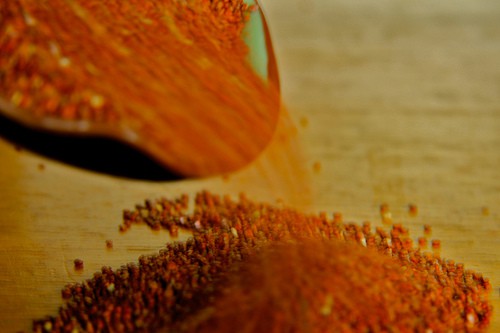Pasta Substitutes by Marisa Peer
When you follow a diet that is low in carbs and free of wheat, you can sometimes find yourself craving carbs. While making sure your diet is full of high quality fats and proteins (like those found in meats, nuts, eggs and omega-rich oils) and fruits and vegetables is important in making sure you keep yourself satisfied, it’s also okay to integrate some other types of grains into your diet. Ancient grains are a good choice as rice and pasta substitutes and becoming increasingly easy to find in supermarkets.
If you’re wondering why ancient grains are better than wheat, go to your grocery store. One of the problems with wheat is it’s prevalence in our diet. Once you stop eating wheat or gluten (the latter of which is a protein found in wheat, barley and rye) you immediately notice that nearly half the grocery store is off limits. Highly refined, nutritionally bankrupt flour is in nearly 60% of the foods we eat in a standard diet and for many people wheat-based foods make up 80% of their food intake.
If you see wheat growing in a field, you notice that it is not in a form that is anywhere close to being edible. It requires machines, factories and chemicals to process and refine it in order to get rid of the poisonous outer husk and turn it into the flour which makes a loaf of bread (a process which strips it from it’s nutritional value). Ancient grains, on the other hand, are nearly identical to the grains harvested in the days of early agriculture and thus don’t require massive factories and machines to make them edible. In addition to being less refined, they are more fiber-rich, thereby making them slower to digest and causing your insulin to spike less (if a food makes your insulin spike quickly, it’s a good indication that it will cause weight gain and fat storing).
Here are four ancient grains you can start integrating into your diet as a pasta substitute, couscous (which comes from wheat), cereals, and rice:
–Quinoa– I’ve long been advocating quinoa. Since it’s a seed, it’s technically not even considered a carb, but it’s a perfect stand-in for rice and pasta. It also cooks quickly and can be found in all grocery stores now.
–Amaranth– this is gluten free and a complete protein, meaning it contains all nine essential amino acids. It’s also rich in magnesium, iron and potassium, and makes for a wonderful breakfast porridge with almond milk, cinnamon and berries and is excellent in place of rice in risottos or curries or in place of pasta.
–Farro– This grain is from the mediterranean and is chewy and nutty in texture/taste. It’s also high in iron. Because of it’s hearty texture, it’s cook to use in stews and casseroles as it can withstand high cooking temperatures (note: avoid “pearled” varieties as they are more processed)
–Millet- The fact that this is used for bird food in the US is a good sign that it’s a whole, nutritious food. It doesn’t have to taste like bird food though. It has a subdued flavour and fast cooking time which means you can easily add it to salads and stir fries in place of rice.
My previous blog is available to read on gluten free treats.

